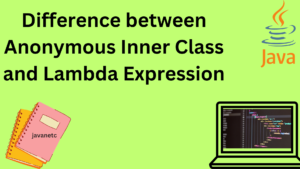Introduction
Python is known for its simplicity and versatility, making it one of the most popular programming languages in the world. Whether you’re a seasoned developer or a beginner taking your first steps into the world of programming, mastering Basic Python syntax and writing your first program is an essential foundation. In this comprehensive guide, we’ll delve into the fundamental aspects of Python syntax, step-by-step, and guide you through creating your inaugural Python program.
Table of Basic Python Syntax and Writing Your First Program
Understanding Basic Python Syntax:
1. Variables and Data Types:
- In Python, variables are used to save information values. They can be of different data types, including integers, floats, strings, lists, tuples, dictionaries, etc.
- Declaring variables is simple. For example:
x = 10
name = "John"- Python is dynamically typed, so there is no need to explicitly declare the data type of a variable. However, Python does have data types, and understanding them is crucial for effective programming.
2. Comments:
- Comments are essential for code readability and understanding. In Python, comments are preceded by a ‘#’ symbol.
- Example:
# This is a single-line comment
"""
This is a multi-line comment
spanning multiple lines.
"""
3. Indentation:
- Python uses indentation to define blocks of code. This is unlike many other programming languages that use curly braces or keywords.
- Proper indentation is crucial for Python syntax. Incorrect indentation can cause syntax errors.
- Example:
if x > 5:
Print("x is extra than 5")
else:
Print("x is much smaller or identical to 5")
4. Control Structures:
- Python supports various control structures such as if statements, loops (for and while), and functions.
- Example of a loop:
for i in range(5):
print(i)
Writing Your First Python Program:
Now that we have a basic understanding of Python syntax, let’s write our first Python program – a simple “Hello, World!” program.
# First Python Program
print("Hello, World!")
Save this code in a file with a ‘.py’ extension, such as ‘hello.py’. Then, open your command-line interface, navigate to the directory where your file is located, and execute the program by typing python hello.py.
Difference Box Python and other programming languages
Below is a comparison chart highlighting the key differences between Python and other programming languages:
| Feature | Python | Other Languages |
|---|---|---|
| Syntax | Clean and Readable | Varied |
| Indentation | Significant | Less Significant |
| Typing System | Dynamically Typed | Statically Typed |
| Ecosystem | Large and Active | Varied |
| Learning Curve | Gentle | Steeper |
This chart illustrates Python’s unique characteristics that set it apart from other programming languages, making it an excellent choice for beginners and experienced programmers alike.
Conclusion:
Congratulations! You’ve taken your first steps into the world of Python programming by understanding basic syntax and writing your first Python program. Python’s simplicity and readability render it an excellent option for individuals at all levels of programming proficiency, including both beginners and seasoned developers. As you continue your journey, remember to practice regularly, explore Python’s vast ecosystem of libraries and frameworks, and never stop learning. Happy coding!



